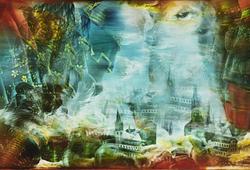A massive nine dragon charger, Qing dynasty with Qianlong mark.
Sturdily potted with curved sides rising from a tapered foot to a wide everted rim, the interior painted with an iron red four clawed frontal dragon curled around a flaming pearl amidst a turbulent sea of underglaze-blue waves, around the sides, further four rampant four clawed dragons in different lively attitudes, all pacing waves, the reverse of the rim with further four lively dragons. The white glazed base with a seal mark in underglaze blue. Diameter 51.5 cm.
Provenance
The Collection of Sven Eric Hugo Raab. Thence by descent.
Literature
A legend explains the reasons why there are 9 dragons as opposed to 8 or 10 in Chinese mythology. According to Zhou Yi (one of the oldest of the Chinese classic texts), nine symbolizes yang. Ancient Chinese categorized numbers into yang numbers and yin numbers. Odd numbers signify yang, while even numbers represent yin, and nine is the largest yang number.
More information
Dishes of this magnificent size and formidable decoration were made to impress. Such wares were used at Imperial banquets and on special celebratory occasions, such as the ‘Thousand Elderly Banquet’ held in honour of senior citizens when thousands of invited guests were served a great feast. The Manchu custom of banqueting closely followed the Mongolian and Tibetan tradition of shared communal dining.

































